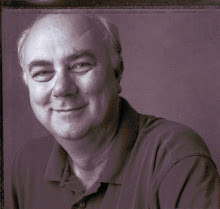The Year Without a Summer, The Year the Holston River Froze - 1816
Barney Pendleton says that with all the cold weather I need to write a column about 1816, the Year Without a Summer, the Year the Holston River Froze. Then I remembered I had already written that column, five years ago!
This column was originally published January 16, 2005:
Torrential rains in sunny Southern California?
A deadly tsunami in the South Pacific?
Reports of mudslides and volcanoes have been all over the news as the weather has moved from its little front-page box to take over the headlines.
In short, the weather has been crazy.
But nothing like 1816.
That was the Year of Hard Times, the Year Without a Summer. That was the year that ponds in the Kingsport area - it wasn’t called Kingsport yet - iced over in July.
Those who survived that crazy climate change would later refer to it as “Eighteen hundred and froze to death.”
It all began in 1812 when the Tambora island volcano in Indonesia awoke from a 5,000-year slumber and began emitting steam and ash. Then on April 5, 1815 Tambora exploded with such force that its volcanic column soared 15 miles into the sky. The blast was heard 600 miles away. But it was only the beginning.
Five days later Tambora really blew her stack, sending volcanic matter up 25 miles.
The superheated flows of ash, rock and pumice from the mountain wiped out the province’s entire population of ten thousand people. And the resulting 20-foot tsunamis swamped nearby islands. In the end the death toll reached more than 117,000.
The Tambora eruption has been assigned retrospectively a 7 on the 8-point VEI (Volcanic Explosivity Index), the only 7 since Baitoushan on the China-Korea border erupted in 1050 A.D. It was a whopper.
It would be a year before the effects of Tambora would be felt around here but felt they were.
As the late Muriel Spoden details in her book “The Netherland Inn Chronicles,” “All went exceedingly well for (merchant) George Hale until April of 1816 when all of the citizens in the Christianville Boat Yard area experienced the beginning of a very hard time.”
It was a very hard time, particularly in the Northeastern states. Adino Brackett of Lancaster, New Hampshire would later record in his diary 1816, “This past summer and fall (of 1816) have been so cold and miserable that I have from despair kept no account of the weather. It could have been nothing but a repeatation of frost and drought.”
Even Europe was affected. “A wet, ungenial summer” ruined a Swiss holiday for Mary Shelley, John Polidori and their friends but produced a happy outcome for readers. Forced to stay indoors Shelley wrote “Frankenstein” and Polidori penned “The Vampyre.”
The odd weather patterns resulting from sunlight being blocked by all that volcanic ash was felt as far south as northeast Tennessee. Locals noted an unusual red glow in sunsets.
Spoden writes, “Starting in April, (1816) severe cold weather, with snow, ice and frost became progressively worse through August…. People froze to death as snow and sleet fell for seventeen days in May. August was worse as ice coating killed everything green and ice covered ponds and rivers.”
There was even a frost on August 22. Spoden says, “Crops were ruined. Seed corn stored in 1815 sold in the spring of 1817 for $5 to $10 a bushel. To add to the farming and boating woes, the spring flood curtailed business throughout the area. These and other problems caused George Hale to lose the King Saltworks contracts, and many charge customers were unable to pay their bills.”
It was a very hard time indeed in east Tennessee
But the long-term effects of the Year without a Summer were even more profound for the country. Dave Thurlow of the Weather Notebook radio show says the impact is still being felt today, particularly the effect of one June cold snap that killed the vegetable crop across the Northeast and inspired many bankrupt farmers to pack up and move to the more temperate Midwest. “Had there been no reason for European settlers to head west at that time, the nation's distribution of farmland and manufacturing, and its balance of power, might have turned out much differently. You could say that our lives today are, in some ways, the product of a 5-day cold snap (189) years ago.”


0 Comments:
Post a Comment
<< Home